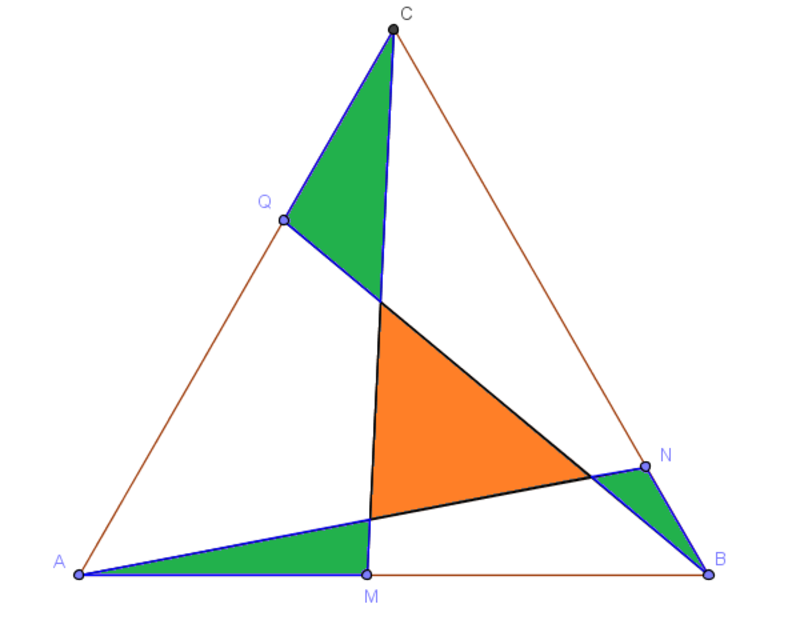A Partitioned Equilateral Triangle

Above shows an equilateral triangle with side length 1. Given that and are points on the sides and such that the lines and divide the triangle into 4 triangles and 3 quadrilaterals.
We color the triangles in two colors (orange and green) in such way that any two triangle with a common vertex are colored with different colors.
If the area colored in green is equal to that colored in orange, find the value of .
The answer is 1.
This section requires Javascript.
You are seeing this because something didn't load right. We suggest you, (a) try
refreshing the page, (b) enabling javascript if it is disabled on your browser and,
finally, (c)
loading the
non-javascript version of this page
. We're sorry about the hassle.
Let A M , B N and C Q be x , y and z respectively. We need to find x + y + z , let the area of the equilateral triangle be a .
Because the side length of equilateral △ A B C is 1, the area of △ A B N , [ A B N ] = y a and that of green △ A P M , [ A P M ] = x y a . Similarly, [ B N R ] = y z a and [ C Q S ] = z x a . Therefore, the area of the three green triangles is ( x y + y z + z x ) a .
The area of the orange △ P R S is given by:
[ P R S ] = [ C B M ] − [ P N B M ] − [ C N R S ] = [ C B M ] − ( [ A B N ] − [ A P M ] ) − ( [ B C M ] − [ C Q S ] − [ B N R ] ) = ( ( 1 − x ) − ( y − x y ) − ( z − z x − y z ) ) a = ( 1 − x − y − z + x y + y z + z x ) a
Since the area in green is equal to that in orange, we have:
( x y + y z + z x ) a 0 ⟹ x + y + z = ( 1 − x − y − z + x y + y z + z x ) a = 1 − x − y − z = 1